Disclosure: This article contains affiliate links. We may earn a commission from purchases at no extra cost to you, which helps our travel content.
The first time I entered a Nairobi market twenty years ago as a young anthropologist, I was overwhelmed by the symphony of colors, scents, and voices negotiating in multiple languages. Today, after countless visits documenting East African craft traditions, I've developed an intimate understanding of where authenticity thrives amid the tourist-oriented souvenirs. Nairobi's markets aren't just shopping destinations—they're living cultural archives where traditional craftsmanship persists despite rapid urbanization, offering couples a meaningful weekend exploration of Kenya's material culture.
Maasai Market: The Rotating Treasure Hunt
The Maasai Market deserves its reputation as Nairobi's premier craft destination, but with a crucial caveat: it's nomadic. This roving marketplace operates on a predictable weekly schedule, appearing at different locations throughout the city—Tuesdays at The Junction, Wednesdays at Capital Center, Fridays along Ngong Road, and weekends at Nairobi Law Courts parking.
What distinguishes this market anthropologically is how it brings rural artisans directly into urban commerce without excessive middlemen. You'll find an astonishing array of beadwork—from intricate necklaces to elaborate belts—created by women's cooperatives from various ethnic communities, not just Maasai despite the market's name.
During my research visits, I've watched the evolution of certain craft forms. Traditional Maasai beadwork patterns, once strictly adhering to clan-specific color combinations and symbolic meanings, now incorporate contemporary aesthetics while maintaining core techniques. When examining beadwork, look for tight, consistent stitching and the weight of quality glass beads rather than plastic alternatives.
For textile enthusiasts, the vibrant kikoi and kanga fabrics make versatile souvenirs. I've used them as tablecloths, wall hangings, and beach wraps. For the best selection, I recommend bringing a sturdy foldable tote that compresses to pocket size but expands to hold your treasures without plastic waste.

💡 Pro Tips
- Visit early (before 10am) for the best selection and fewer crowds
- Expect to bargain, but do so respectfully—start at about 60-70% of the initial price
- Ask artisans about the meaning behind designs—many patterns have specific cultural significance
Utamaduni Craft Centre: Ethical Shopping in Langata
For couples seeking quality crafts without the intensity of open-air markets, Utamaduni Craft Centre in Langata offers a more relaxed alternative. Housed in a converted colonial residence surrounded by lush gardens, this collection of small shops operates with transparent fair trade practices that align with my commitment to ethical consumption.
What makes Utamaduni anthropologically significant is its role in preserving craft lineages that might otherwise disappear. Each shop represents different cooperative groups or family workshops, with proceeds directly supporting artisan communities. The pricing is fixed—unusual for Kenya—but reflects fair compensation rather than tourist premiums.
My research on textile traditions always leads me to their exceptional selection of kiondo baskets. These sisal and wool woven baskets from the Kamba and Kikuyu communities represent a fascinating adaptation of traditional techniques for contemporary markets. Originally utilitarian items for carrying produce, they've evolved into sophisticated home décor while maintaining the intricate weaving methods passed through generations of women.
The woodcarving section deserves special attention for its museum-quality Makonde pieces from eastern Kenya and neighboring Tanzania. These sculptural works often depict intertwined human figures in what's called the "tree of life" style, representing community interconnectedness. When examining woodcarvings, look for the density of the wood (typically ebony or mahogany) and the signature style of specific carving communities.
After shopping, I recommend unwinding in their garden café with Kenyan coffee. I always carry my insulated travel mug to reduce disposable cup waste while enjoying their excellent brew.

💡 Pro Tips
- Take time to read the informational cards explaining each craft's cultural context
- Look for items made from sustainable materials like olive wood rather than endangered hardwoods
- Ask about shipping options for larger purchases—they offer reliable international delivery
Kazuri Beads Workshop: From Clay to Global Market
My anthropological interest in how craft production adapts to global markets always brings me to Kazuri Beads, a social enterprise founded in 1975 as a small workshop employing disadvantaged women. Today, it's grown into a significant operation while maintaining its social mission.
Located in Karen (named after Karen Blixen of "Out of Africa" fame), this working factory and showroom offers couples a rare opportunity to witness the complete ceramic bead production process—from raw clay to finished jewelry. What makes this experience anthropologically valuable is observing how traditional hand-forming techniques merge with contemporary design sensibilities to create products with global appeal.
The guided workshop tour takes approximately 30 minutes, showing each production stage: clay preparation, bead forming, firing, glazing, and final assembly. What consistently impresses me is how the organization has formalized traditional knowledge transfer, with senior artisans training newcomers in techniques that might otherwise be lost between generations.
In the showroom, you'll find finished jewelry pieces that range from bold statement necklaces to subtle earrings. The quality control is exceptional, with each piece inspected for consistency in size, color, and finish. Beyond jewelry, they've expanded into ceramic homewares like serving dishes and decorative tiles.
For visitors concerned about luggage space, Kazuri offers worldwide shipping. I've found their packaging to be remarkably secure—I've never had a piece break in transit. For protecting smaller ceramic pieces during travel, I recommend using a jewelry organizer with padded compartments that prevent items from colliding in your luggage.
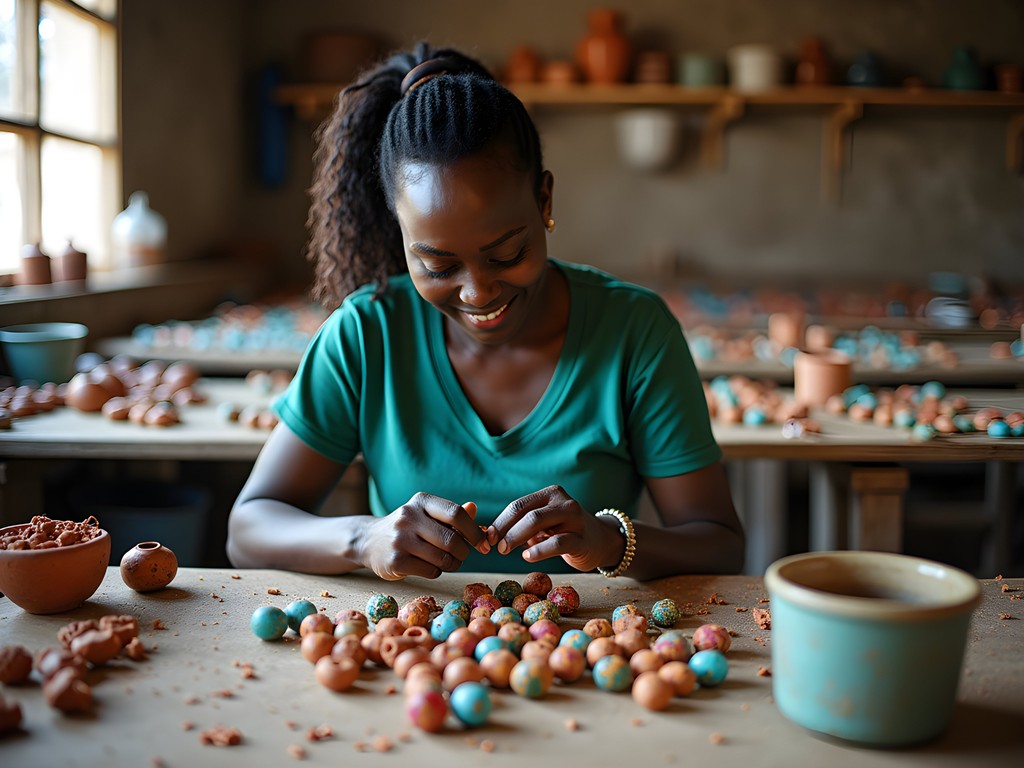
💡 Pro Tips
- Call ahead to confirm tour times, as they occasionally change based on production schedules
- Bring cash for the small café on premises—their samosas make an excellent snack
- Consider purchasing directly from the workshop rather than from resellers in town, ensuring maximum benefit to the artisans
Spinners Web: Curated Crafts Beyond the Tourist Trail
For couples seeking high-quality Kenyan crafts without the negotiation dynamics of markets, Spinners Web in Hurlingham represents an important evolutionary step in East African craft marketing. This expansive showroom brings together over 400 suppliers from across Kenya and neighboring countries, offering consistent quality with fixed pricing.
From an anthropological perspective, what fascinates me about Spinners Web is how it bridges traditional craft production with contemporary retail expectations. Unlike tourist-oriented shops, this establishment primarily served Nairobi's expatriate and affluent local communities when it opened in the 1990s. This orientation toward discerning long-term residents rather than tourists has maintained higher quality standards.
The textile section particularly impresses me with its selection of hand-printed fabrics, from traditional batiks to innovative contemporary designs. These fabrics represent a fascinating hybrid tradition, incorporating techniques from East African coastal communities, Indian influences, and European textile technologies.
Their selection of soapstone carvings from western Kenya's Kisii region deserves special attention. These smooth, polished sculptures represent one of Kenya's most distinctive craft traditions, with techniques passed through family lineages. The stone's natural variations in color create unique patterns in each piece.
For home décor enthusiasts, their selection of hand-carved wooden salad servers and serving bowls from sustainable olive wood makes practical souvenirs that will last decades. I've used my wooden salad hands for fifteen years, and they've only grown more beautiful with age, developing a rich patina that tells the story of countless meals shared with friends.
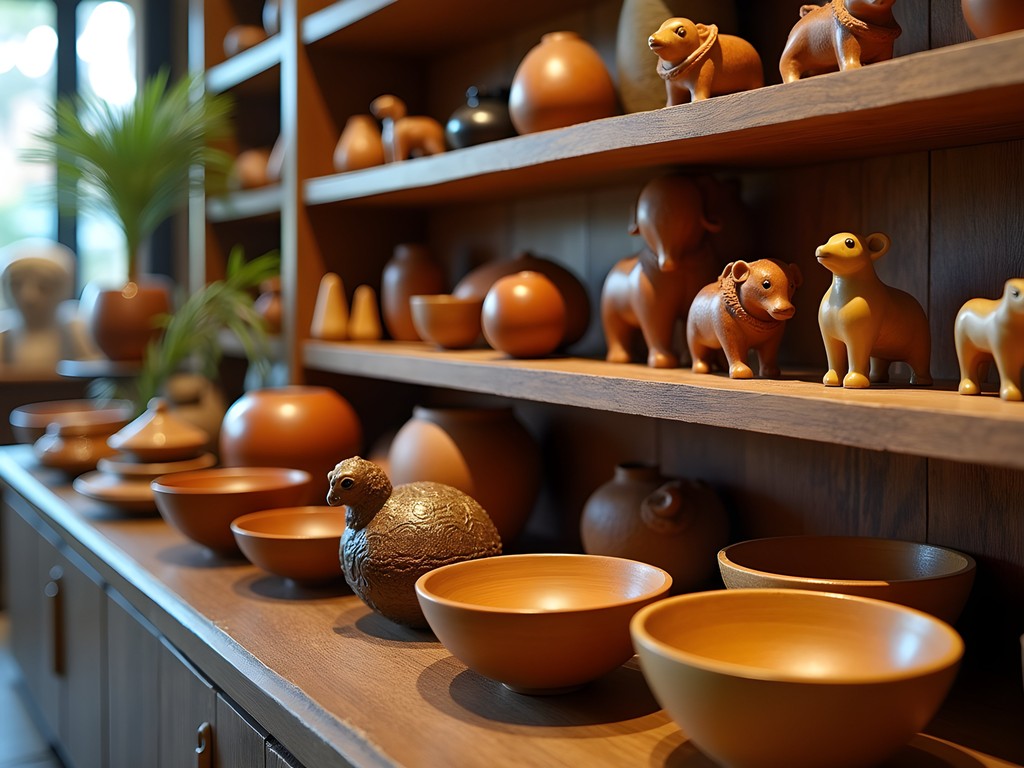
💡 Pro Tips
- Visit on weekday mornings to have the showroom largely to yourself
- Check the small clearance section in the back for discounted items
- Ask about the provenance of specific items—staff are knowledgeable about their artisan sources
City Market: For the Adventurous Couple
No anthropological exploration of Nairobi's material culture would be complete without visiting the bustling City Market downtown. Unlike the more tourist-oriented venues, this municipal market primarily serves local residents, offering an unfiltered glimpse into everyday Nairobi life.
The market's architecture itself tells a story—built in 1930 during British colonial rule, its design reflects European covered market traditions adapted to African commercial practices. The original colonial-era clock still marks time above the main entrance on Muindi Mbingu Street.
While the ground floor focuses on fresh produce, meat, and flowers, the upper level houses craft vendors selling everything from traditional musical instruments to contemporary fashion. What makes this market anthropologically valuable is observing how imported goods interact with local crafts, creating hybrid forms that reflect Kenya's position in global trade networks.
For textile enthusiasts, look for kitenge fabric vendors who can direct you to nearby tailors. These vibrant printed cottons can be transformed into custom clothing within 24-48 hours at reasonable prices. I've commissioned several pieces over the years, including a beautifully tailored jacket that consistently earns compliments.
The market's sensory intensity can be overwhelming for some visitors. I recommend wearing comfortable shoes with good support, as floors can be uneven and occasionally wet. My walking sandals have proven ideal for navigating such environments—secure enough for uneven surfaces yet breathable in Nairobi's warmth.
Navigating City Market requires more cultural awareness than other shopping venues. Dress modestly, keep valuables secure, and be prepared to engage with vendors who may be less accustomed to international visitors. The reward is discovering authentic crafts at local prices and experiencing the vibrant commercial heart of everyday Nairobi.

💡 Pro Tips
- Visit between 10am-2pm when all stalls are open but before afternoon crowds
- Bring small denominations of Kenyan shillings for easier transactions
- Consider hiring a local guide through your hotel for a more informed experience of the market's hidden corners
Final Thoughts
As I've witnessed across three decades of studying material culture, Nairobi's markets represent microcosms of Kenya's broader cultural dynamics—traditional practices adapting to contemporary realities, rural aesthetics finding urban expression, and artisanal knowledge navigating global economic pressures. The souvenirs you choose become more than decorative objects; they're tangible connections to the communities that created them. When you return home with a hand-carved olive wood bowl or intricately beaded jewelry, you carry with you not just an object but a thread in Kenya's ongoing cultural narrative. I encourage you to ask questions, learn makers' names when possible, and understand the contexts behind your purchases. The most meaningful souvenirs aren't necessarily the most expensive but those whose stories you can authentically share. Whether you're a first-time visitor or returning traveler, approach Nairobi's markets with curiosity, respect, and the understanding that ethical purchasing decisions help preserve craft traditions for future generations.
✨ Key Takeaways
- Research market days and locations before your trip to maximize shopping opportunities
- Budget extra time for the personalized interactions that make market shopping meaningful
- Consider how your purchases support sustainable livelihoods and cultural preservation
- Look beyond obvious souvenirs to find items with authentic connections to Kenyan daily life
📋 Practical Information
Best Time to Visit
year-round, though April-May rainy season can affect outdoor markets
Budget Estimate
$30-100 per person for quality souvenirs, depending on preferences
Recommended Duration
2-3 days to explore multiple markets without rushing
Difficulty Level
Beginner (With Moderate Street Awareness In Downtown Locations)

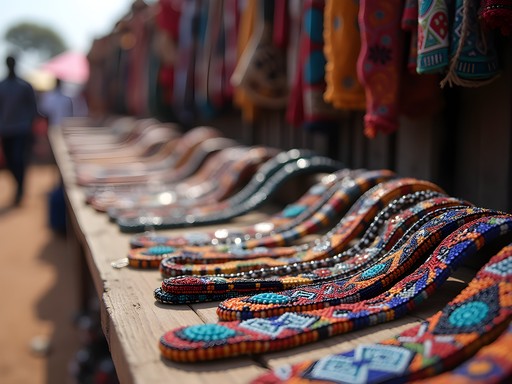
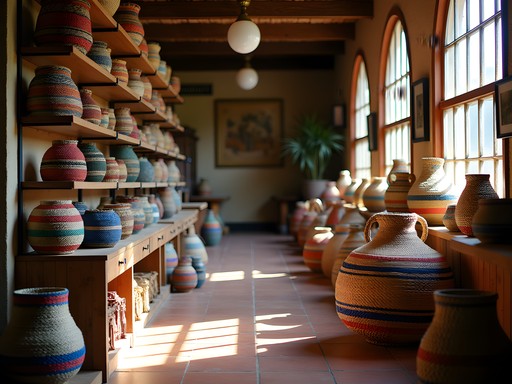

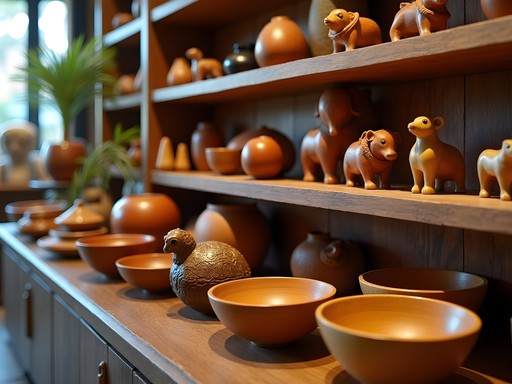
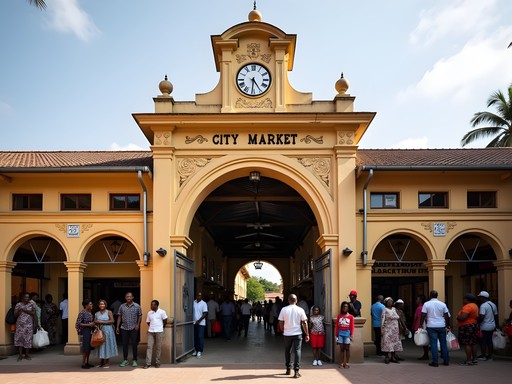










Comments
blueguide
Those Kazuri beads look amazing! Adding to my list!
happywalker
This brings back so many memories! I was at the Maasai Market last year and it's exactly as you described - a riot of colors and sounds! The trick is definitely to know which day of the week to go. I almost missed it because I didn't realize it rotates locations. The beadwork I bought is still my favorite souvenir from Kenya. Did you find the prices at Utamaduni higher than the street markets? Worth it for the ethical sourcing though!
Samantha Hughes
Yes, Utamaduni is definitely pricier, but I appreciate knowing the artisans are being fairly compensated. Plus the quality tends to be more consistent!
happywalker
That makes sense! I'll prioritize it next time. Thanks for the insider perspective!
Douglas Bradley
Excellent overview of Nairobi's markets, Samantha! I'd add that timing can be crucial when visiting the Maasai Market. Early mornings (before 10am) tend to be less crowded and vendors are often more willing to give good prices for their first sales of the day. I found City Market worth mentioning too - it's permanent and great for textiles and woodcarvings. For anyone planning to shop extensively, I'd recommend bringing a foldable tote bag like the packable daypack which saved me when I inevitably bought more than I planned. Also worth noting that many vendors now accept mobile payments through M-Pesa if you have a local SIM, which is convenient when your cash runs low!
adventureway
I visited the Utamaduni Craft Centre last year and it was such a highlight! Loved that I could shop without the pressure of bargaining, and knowing the artisans were being paid fairly made it worth the slightly higher prices. I got this gorgeous soapstone carving that everyone comments on when they visit our house. The café there was pretty good too!
coolclimber
Did you find the prices at Utamaduni much higher than the regular markets?
adventureway
A bit higher, but not crazy. Maybe 20-30% more than what you'd pay after bargaining at Maasai Market, but the quality seemed better and shopping experience more relaxed.
coolclimber
Those Kazuri beads look amazing! Definitely on my list for when I visit.
mountainway2623
Great post! I'm heading to Nairobi next month and definitely want to visit these markets. Any tips on bargaining? I'm always worried about offending locals but also don't want to overpay too much.
Samantha Hughes
Bargaining is expected at most markets, especially the Maasai Market! Start around 50-60% of the initial price and work up from there. Always keep it friendly and smile - it's part of the cultural experience. Walking away politely often gets you the best price too!
mountainway2623
Thanks so much! That's really helpful. I'll practice my friendly haggling face before I go!
Savannah Walker
Samantha, your post brought back such vivid memories of my time in Nairobi! I still remember the overwhelming sensory experience of my first Maasai Market visit - the vibrant textiles, the smell of leather and wood, and those melodic sales pitches! I ended up buying a hand-carved chess set from an elderly artisan who told me he'd been carving for over 50 years. He showed me photos of his grandchildren who were learning the craft. That connection made the souvenir so much more meaningful than just another tourist trinket. For anyone heading to these markets, I'd suggest taking time to chat with the artisans when possible. Their stories add immeasurable value to whatever you purchase. And don't forget to bring a reusable bag - you'll definitely end up buying more than you planned!
islandwanderer2183
OMG! I just got back from Nairobi and the Maasai Market was AMAZING!!! Bought so many colorful fabrics and beaded jewelry! Wish I'd known about the Kazuri workshop though. Next time for sure! My Kenya travel guide mentioned some of these spots but this post has so much more detail. Love all your insights about the cultural significance behind the crafts!
Amit Sullivan
Wonderful post, Samantha! Your anthropological perspective adds so much depth. The Kazuri Beads Workshop was a highlight of my last visit to Kenya. Watching those skilled women transform simple clay into intricate beads was mesmerizing. I spent hours talking with Esther, one of the senior artisans who's been there for 25 years. She showed me how they use traditional techniques while incorporating contemporary designs. One tip for anyone visiting: take the workshop tour in the morning when production is in full swing, then browse the shop after lunch when it's quieter. I found the perfect necklace for my wife there - she hasn't taken it off since! I'd also recommend bringing a compact travel bag for your purchases. Markets get crowded and it keeps your hands free while shopping.
Samantha Hughes
Thank you for sharing that wonderful experience, Amit! Esther is indeed a treasure - she taught me so much about the social ecosystem of the workshop. Your morning tip is spot on too.
luckyone
Adding Kazuri Beads to my itinerary now! How did you get there? Is Uber reliable in Nairobi?
Amit Sullivan
Uber works great in Nairobi! Very affordable too. Just make sure you have a local SIM card with data. Alternatively, many hotels can arrange transportation if you prefer.
globechamp
What days does the Maasai Market rotate to which locations? Will be there for just 4 days in November.
cityadventurer
Not the author but when I went it was at the Village Market on Fridays, downtown on Saturdays, and Yaya Centre on Sundays. Check with your hotel though as it might change!
globechamp
Thanks for the info! Really helpful.
Venture X
Premium card with 2X miles, $300 travel credit, Priority Pass